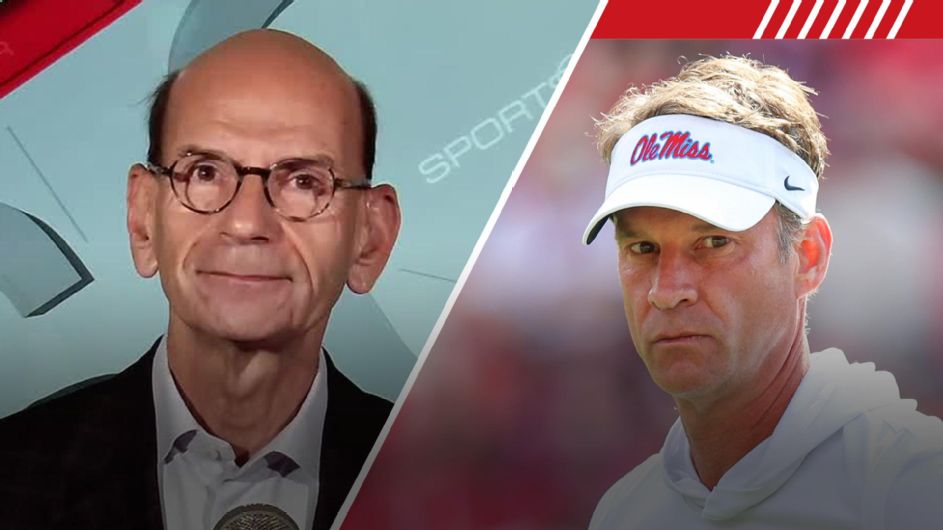Sports
College Football Week 9: Houston and Utah Surge into Rankings

The landscape of college football shifted notably in Week 9, with the Houston Cougars and Utah Utes earning their places in the rankings following significant victories. The Utes dominated the Colorado Buffaloes, winning 53-7, while the Cougars secured their first road win against an AP-ranked opponent since 2017, defeating Arizona State.
After the loss to Utah, Colorado coach Deion Sanders expressed his disappointment candidly, stating, “This is bad. This is probably the worst beating I’ve ever had except when my momma whooped me as a kid.” The Buffaloes allowed a staggering 587 yards of offense, including 422 on the ground, underscoring the urgent need for improvement as the season progresses.
As the College Football Playoff (CFP) contenders face the final stretch of the season, the focus has shifted towards enhancing defensive performance. Week 9 showcased several high-profile matches, with notable results impacting the rankings.
Top Programs Find Ways to Excel
The Ohio State Buckeyes maintain their top position, ranking third nationally in defensive Expected Points Added (EPA). They lead the nation in third-down defense at 21.1% and red zone efficiency defense at 16.7%. Despite their impressive statistics, they are tied for 57th in forced turnovers with only nine, suggesting room for growth in creating more defensive opportunities.
Following closely is the Indiana Hoosiers, who also rank high in defensive EPA. The Hoosiers have not allowed more than 13 points against any Big Ten offense, leading the country with 29 sacks. Conversely, their pass defense, allowing a completion rate of 61.5%, indicates a potential area for improvement.
The Texas A&M Aggies remain undefeated at 8-0, showcasing a blend of defensive resilience and vulnerability. After a mixed performance against LSU, where they allowed two long touchdown drives in the first half but rebounded in the second, they must focus on consistency and capitalizing on interception opportunities.
The Alabama Crimson Tide show signs of improvement against the run, limiting explosive plays significantly in recent games. Their recent win over South Carolina demonstrated their ability to adapt defensively, albeit with some concerns regarding their tendency to allow scoring plays exceeding 20 yards.
The Georgia Bulldogs, despite ranking fifth, face challenges with their defensive metrics. They struggle in several categories, including sacks and tackles for loss, indicating a pressing need for adjustments as they aim to keep their CFP hopes alive.
New Entrants and Rising Contenders
The Houston Cougars, now ranked for the first time this season, have surged to 7-1. Their defense, while not dominating statistically, has proven effective in critical moments, allowing just 21.3 points per game. Their recent victory against Arizona State, where they allowed 426 yards but no points in the first three quarters, exemplifies their ability to perform under pressure.
The Utah Utes made a compelling case for their ranking with a commanding performance against Colorado. Their defense held the Buffaloes to just 38 rushing yards and 102 passing yards, while forcing two turnovers. This dominant showing reaffirms Utah’s capability, particularly in high-stakes situations.
As the season progresses, the focus will remain on how these teams can enhance their defensive strategies to secure their spots in the CFP. With only a few weeks left in the regular season, every game becomes crucial for teams aiming to solidify their playoff aspirations. Coaches and players alike recognize that a strong defense will be essential to navigate the competitive landscape and achieve their championship dreams.
-

 Science2 weeks ago
Science2 weeks agoIROS 2025 to Showcase Cutting-Edge Robotics Innovations in China
-

 Politics2 weeks ago
Politics2 weeks agoJudge Considers Dismissal of Chelsea Housing Case Citing AI Flaws
-

 World2 weeks ago
World2 weeks agoBravo Company Veterans Honored with Bronze Medals After 56 Years
-

 Lifestyle2 weeks ago
Lifestyle2 weeks agoStone Island’s Logo Worn by Extremists Sparks Brand Dilemma
-

 Top Stories2 weeks ago
Top Stories2 weeks agoIndonesia Suspends 27,000 Bank Accounts in Online Gambling Crackdown
-

 Health2 weeks ago
Health2 weeks agoStartup Liberate Bio Secures $31 Million for Next-Gen Therapies
-

 Sports2 weeks ago
Sports2 weeks agoMel Kiper Jr. Reveals Top 25 Prospects for 2026 NFL Draft
-

 Health2 weeks ago
Health2 weeks agoTop Hyaluronic Acid Serums for Radiant Skin in 2025
-

 World2 weeks ago
World2 weeks agoHoneywell Predicts Record Demand for Business Jets Over Next Decade
-

 Politics2 weeks ago
Politics2 weeks agoNew Jersey Voters Urged to Register Ahead of November Election
-

 Lifestyle2 weeks ago
Lifestyle2 weeks agoMary Morgan Jackson Crowned Little Miss National Peanut Festival 2025
-

 Sports2 weeks ago
Sports2 weeks agoYamamoto’s Mastery Leads Dodgers to 5-1 Victory in NLCS Game 2









